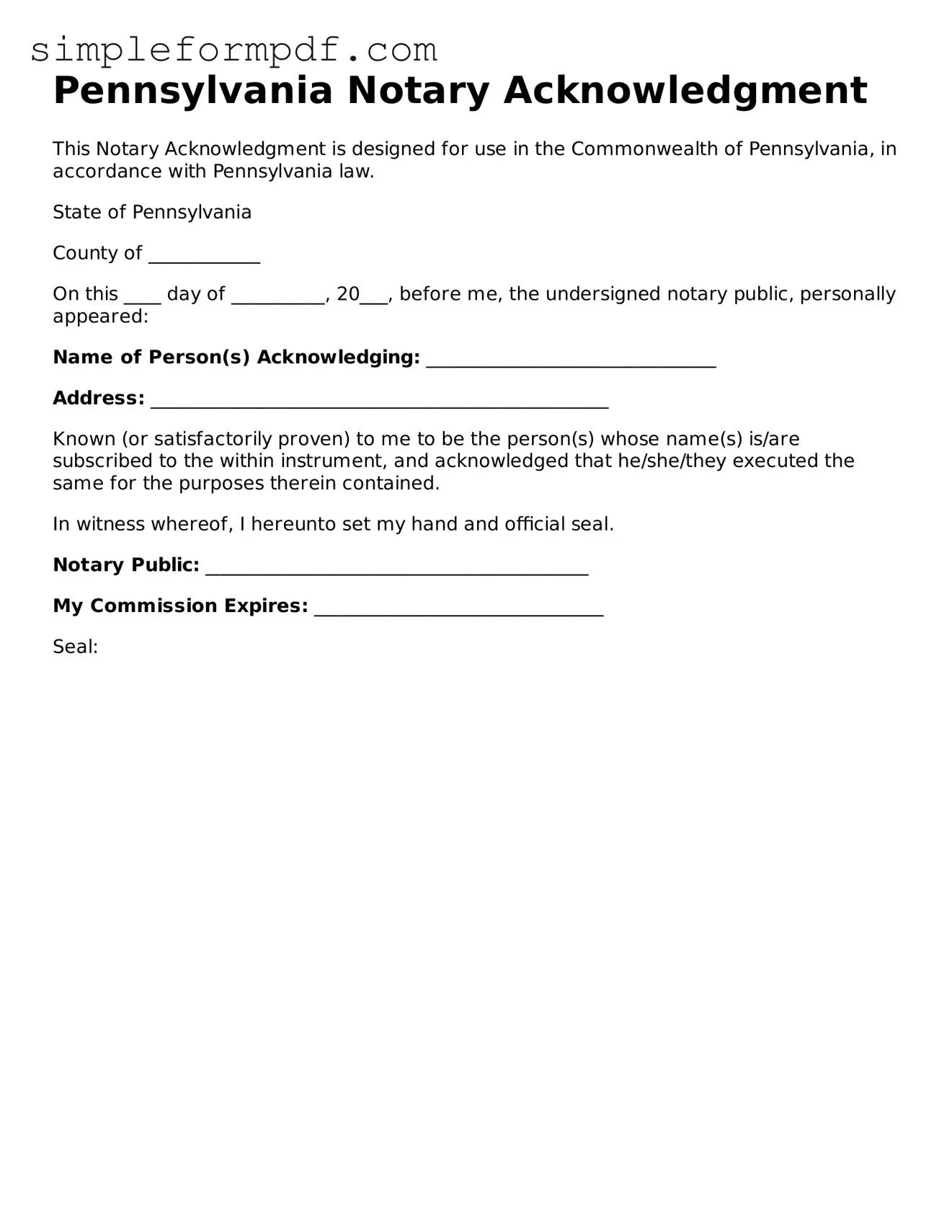Free Notary Acknowledgement Form for the State of Pennsylvania
The Pennsylvania Notary Acknowledgement form is a crucial document that verifies the identity of individuals signing a legal instrument. This form serves as proof that the signer appeared before a notary public and acknowledged their signature willingly. For those needing to complete this important step, fill out the form by clicking the button below.
Launch Editor
